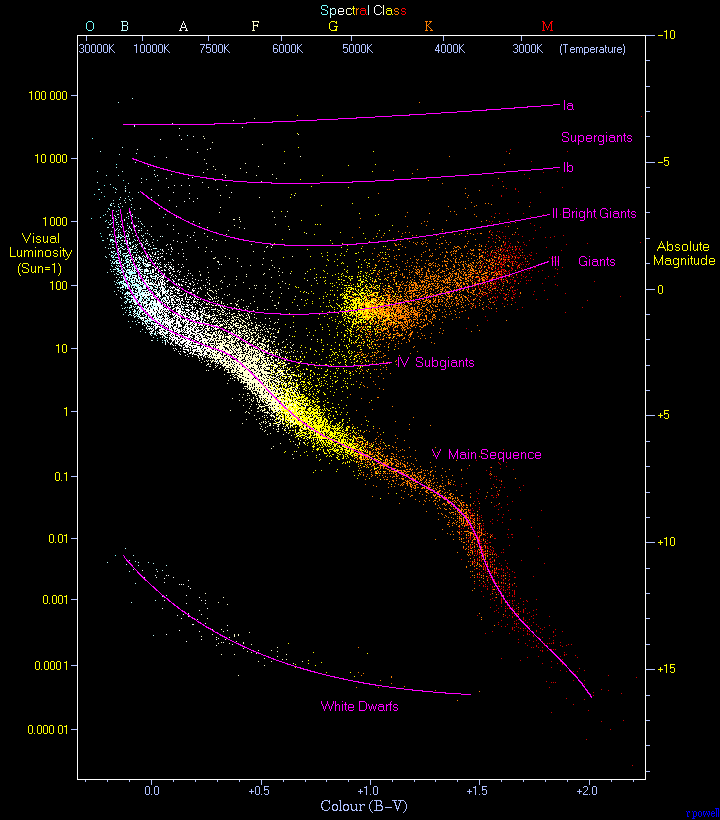The Hertzsprung-Russel Diagram of Stellar Luminosity
I have used the Heaven & Earth program to detail star systems, and recently I've (re-)acquired Book 6: Scouts, so I can use the extended system generation procedures. But without some kind of visual reference, the Spectra & Luminosity attributes of stars was always vague to me. This diagram provides some much-needed context to understand the variation among stars.
For me the most important thing is the average temperature each spectral type. As I have been learning a little bit about exoplanets, I'm discovering how difficult it is to find planets in a star's habitable zone such that some kind of life might exist there. Traveller takes liberties with astronomy in this regard in order to have planets where humans can breathe the air, and where alien animals are a common occurrence. The extended system generation process gives out a lot of planets that are way too hot or too cold for life-as-we-know-it to exist, and it is a serious challenge for humans to create habitats on those planets.
Even the basic world generation system creates lots of planets with challenging surface conditions, which I consider to be one of the system's strengths - and this system was designed in the 1970's before the search for exoplanets had really gotten going, so the designers were just speculating. Seems they weren't too far off.
So referees, instead of the next world your PCs visit being another subtropical paradise, send them to a world with a mean surface temperature of 400 K, orbiting a white supergiant which is blasting out cosmic radiation at hull-melting intensities. That'll get their attention!

No comments:
Post a Comment